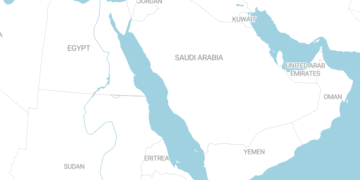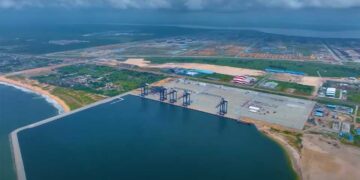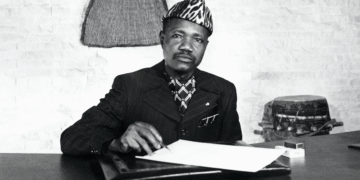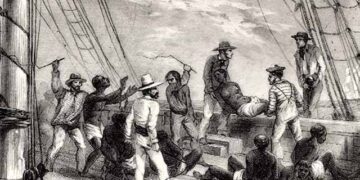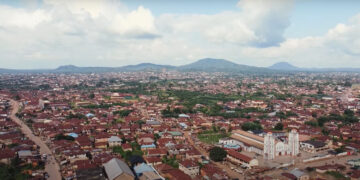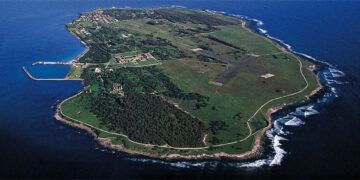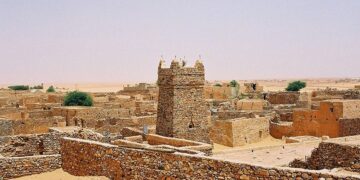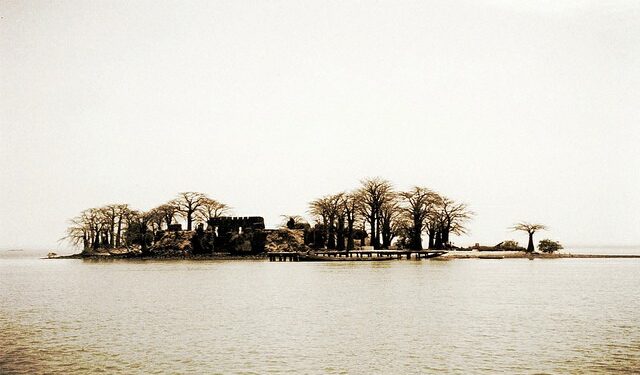Kunta Kinteh Island, formerly known as James Island and St. Andrew’s Island, lies in the middle of the Gambia River, about 30 kilometers from its mouth in the Atlantic Ocean. This tiny island, no more than a few hectares in size, bears on its eroded land contrasting chapters of West African history, from early commercial exchanges to the humanitarian catastrophe of the transatlantic slave trade to its modern symbolism as a bridge of memory and reconciliation.
The island’s first appearance in historical records dates back to the 15th century with the arrival of Portuguese explorers. They, and later other European powers, recognized the immense strategic importance of this stretch of land. It provided a natural defensive position from which to easily control navigation on the Gambia River, a vital artery for trade with the interior. Initially, trade was not limited to humans but also included valuable goods such as gold, ivory, beeswax, and animal hides.
In the mid-17th century, specifically in 1651, the Duchy of Courland (part of present-day Latvia) established the first permanent fort on the island, naming it “St. Andrew’s Island.” This project was part of the small duchy’s ambitions to establish a colonial foothold in Africa. However, this presence was short-lived, as control of the island soon passed to the Dutch and then to the British in 1661. The British named it “James Island” in honor of James, Duke of York (later King James II), and significantly expanded and fortified the fort.
With the growing demand for labor on New World plantations, James Island rapidly became a major center for the slave trade. Its location was ideal for assembling captives brought from hundreds of kilometers inland. The island witnessed a bitter struggle for control between Britain and France, the two dominant colonial powers in the region. Control of the fort changed hands several times during the 17th and 18th centuries, each time being partially or completely destroyed and then rebuilt.
Life within the walls of Fort James was a spectacle of human suffering. Captive men, women, and children were held in cramped, dark cells, in unsanitary and harsh conditions, for periods that could last for weeks or months, awaiting the arrival of slave ships. This period served as a forced “conditioning” process designed to break their will and dehumanize them before the horrific journey across the Atlantic, known as the “Middle Passage.” It is estimated that countless thousands of Africans passed through this island, making it the last place they would ever set foot on their homeland.
The island was not just a prison; it was also an administrative, military, and commercial center. It included barracks for soldiers, warehouses for trade goods and weapons, and residences for the ruler and officials. However, its core existence and primary purpose remained serving a trade based on human enslavement.
By the beginning of the 19th century, James Island’s importance began to decline. Britain’s abolition of the slave trade in 1807 was pivotal in this shift. There was no longer a need for a large-scale prisoner holding center. Furthermore, the construction of new forts at the mouth of the river, such as Fort Bullen on the north bank and the six-gun battery at Banjul (then Bathurst), shifted Britain’s strategic focus to the coast. These new forts were not intended to support the slave trade, but rather to prevent it, as the Royal Navy patrolled to stop illicit slave ships. By the mid-19th century, Fort James was completely abandoned and left in ruins.
The island remained largely forgotten until the 1970s, when American author Alex Haley (Alexander Murray Palmer Haley) brought it back to the forefront of the world with his acclaimed novel, Roots: The Saga of an American Family. Haley traced his family history back to his ancestor, Kunta Kinteh, a young man from the nearby village of Jufureh, who said he was captured and sold into slavery in 1767. Although historical controversy surrounds the accuracy of some details in the novel, its impact has been immense. The novel and its television series have inspired millions, particularly African Americans, to explore their roots and history.

Jufureh town and James Island have become iconic destinations for cultural and historical tourism, with visitors from all over the world coming to see the place where Kunta Kinteh’s story began and which has come to represent the story of millions of Africans who suffered the same fate.
In recognition of its global historical significance as a witness to the slave trade, UNESCO inscribed James Island and its associated sites on the World Heritage List in 2003. This classification includes not only the island and its fort but also a group of sites on both banks of the Gambia River, including the remains of a Portuguese church and a commercial building in the village of Albreda, the Morel Frere Company building in Govoré, as well as Fort Bullen and the six-gun battery at the mouth of the river. Together, these sites constitute a comprehensive testimony to the various aspects of the European presence, the slave trade, and its abolition.
In a highly symbolic move, the Gambian government officially changed the name of “James Island” to “Kunta Kinteh Island” on February 6, 2011. This decision was made to honor the memory of Kunta Kinteh as a symbol of all victims of the slave trade and to emphasize the African identity and history of the island from the perspective of its people, rather than that of its colonizers.
Today, the ruins of Fort James on Kunta Kinteh Island stand as a testament to the past. Visitors can see the remains of the fort’s walls, cells, powder magazines, and some cannons still in position. There are also giant baobab trees dotting the island.
The island has faced a serious existential threat over the centuries, as intense erosion caused by strong river currents has significantly diminished its surface area. The island has lost much of its original size, and the remaining ruins are at risk of collapse and being washed away by the river. Gambian authorities and international organizations are making efforts to preserve what remains of this unique historical site, but the challenge is enormous and ongoing.











